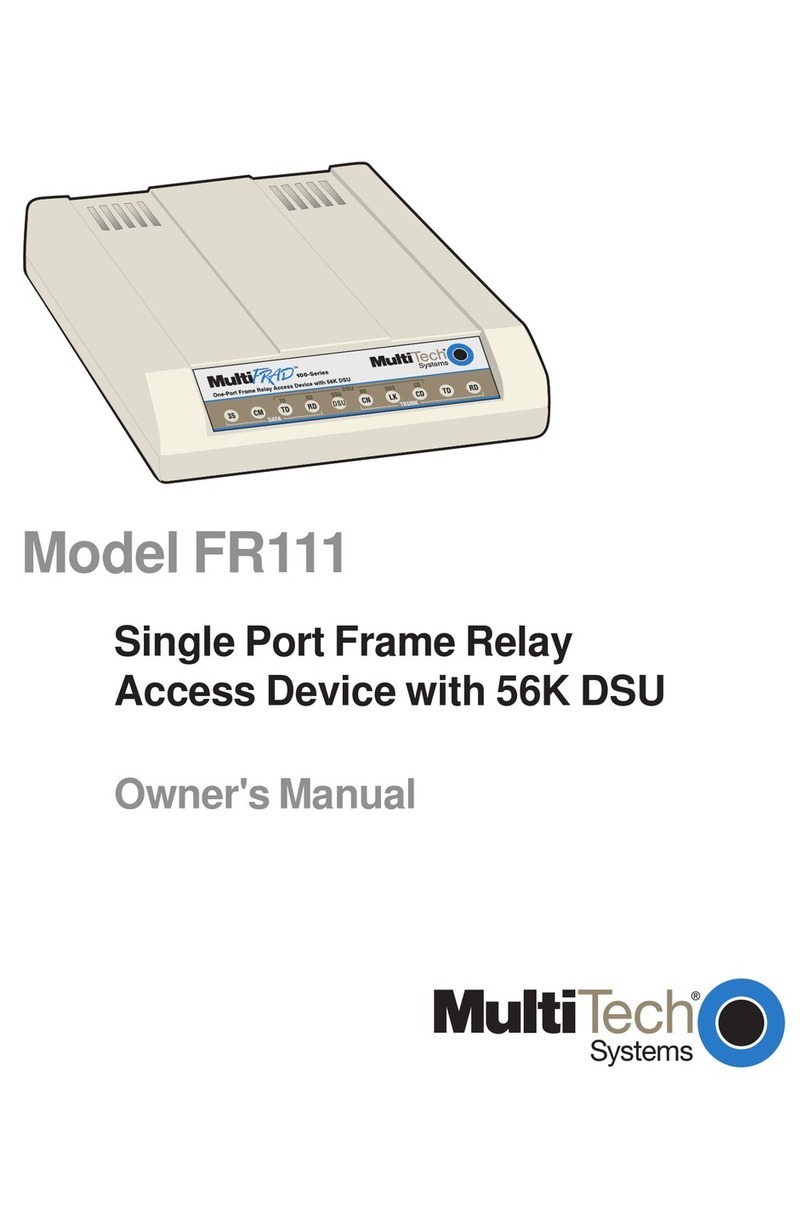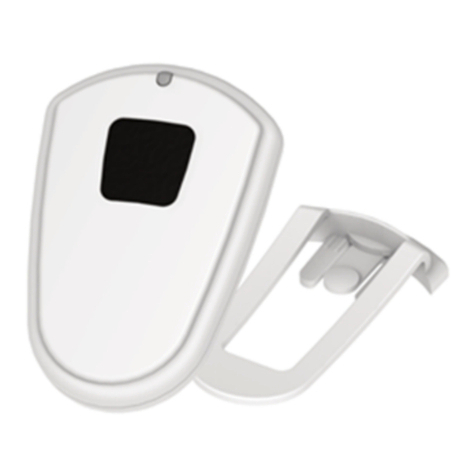Multitech MT56DSU-R User manual
Other Multitech Network Hardware manuals
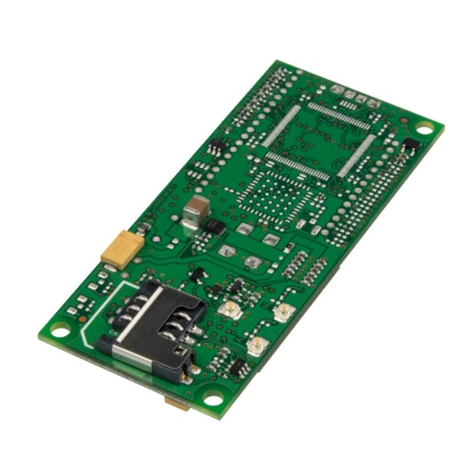
Multitech
Multitech SocketModem MTSMC-L4E1 User manual
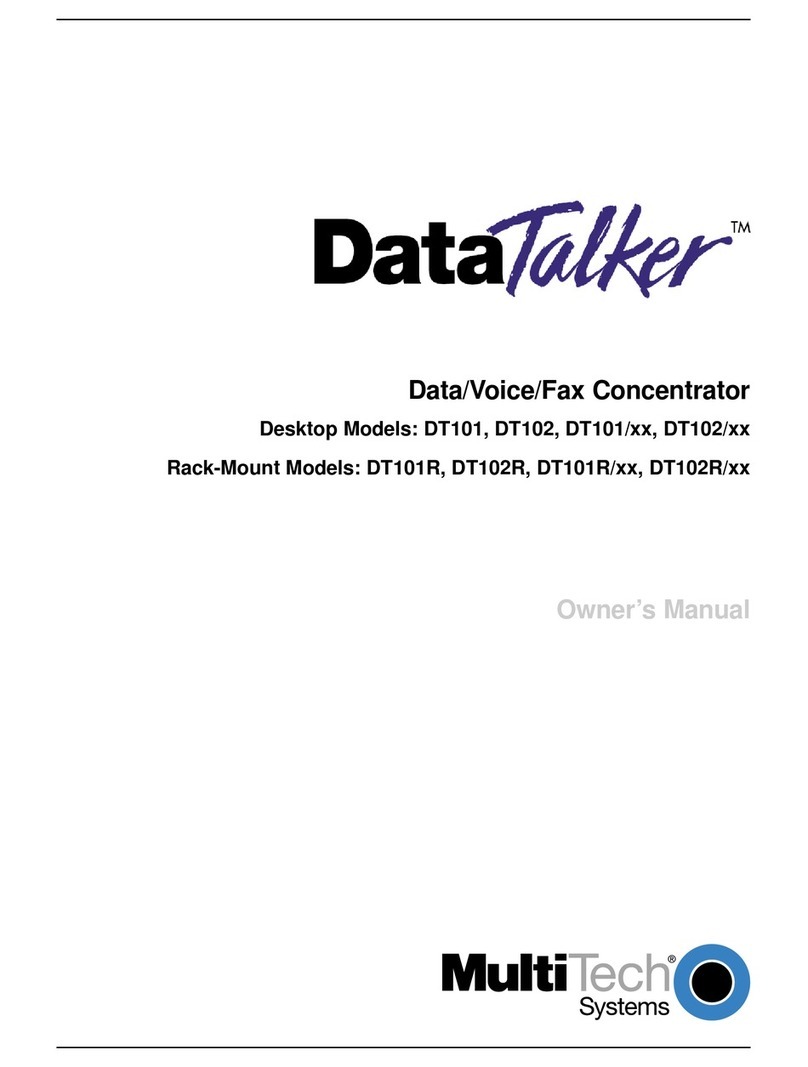
Multitech
Multitech DataTalker DT101 User manual
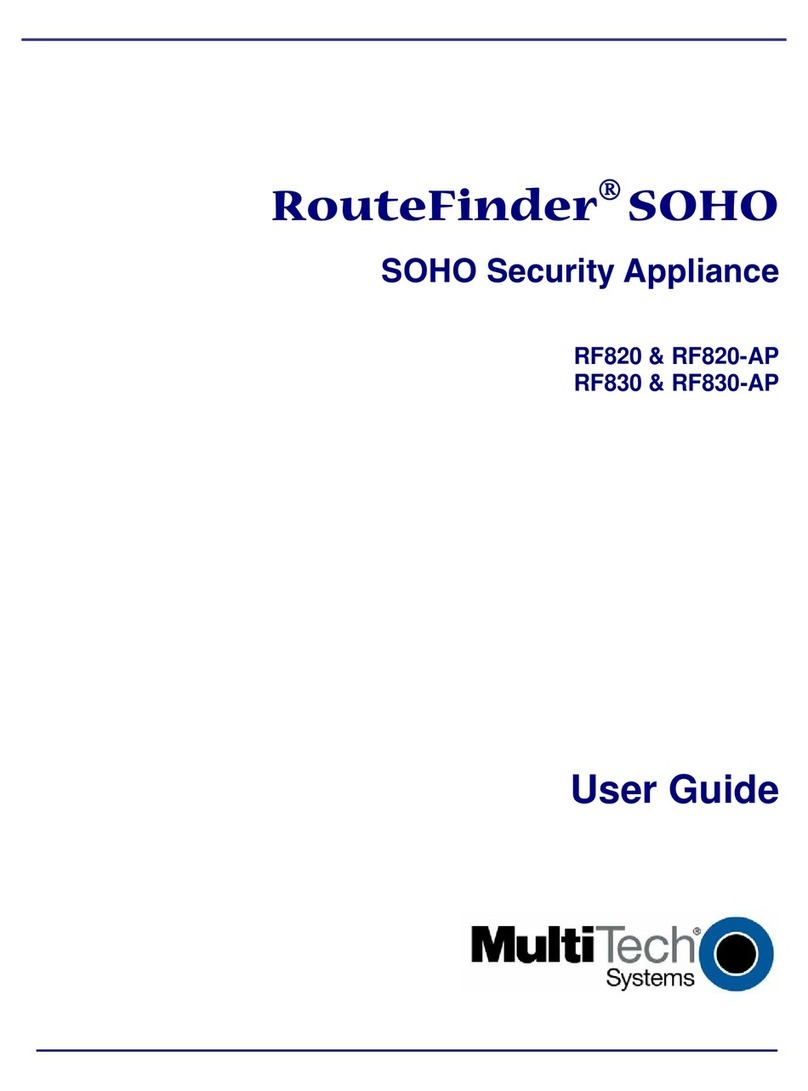
Multitech
Multitech Multi-Tech RouteFinder SOHO RF820 User manual

Multitech
Multitech MT64DSU User manual

Multitech
Multitech SocketModem Cell MTSMC-L4G1 Application guide
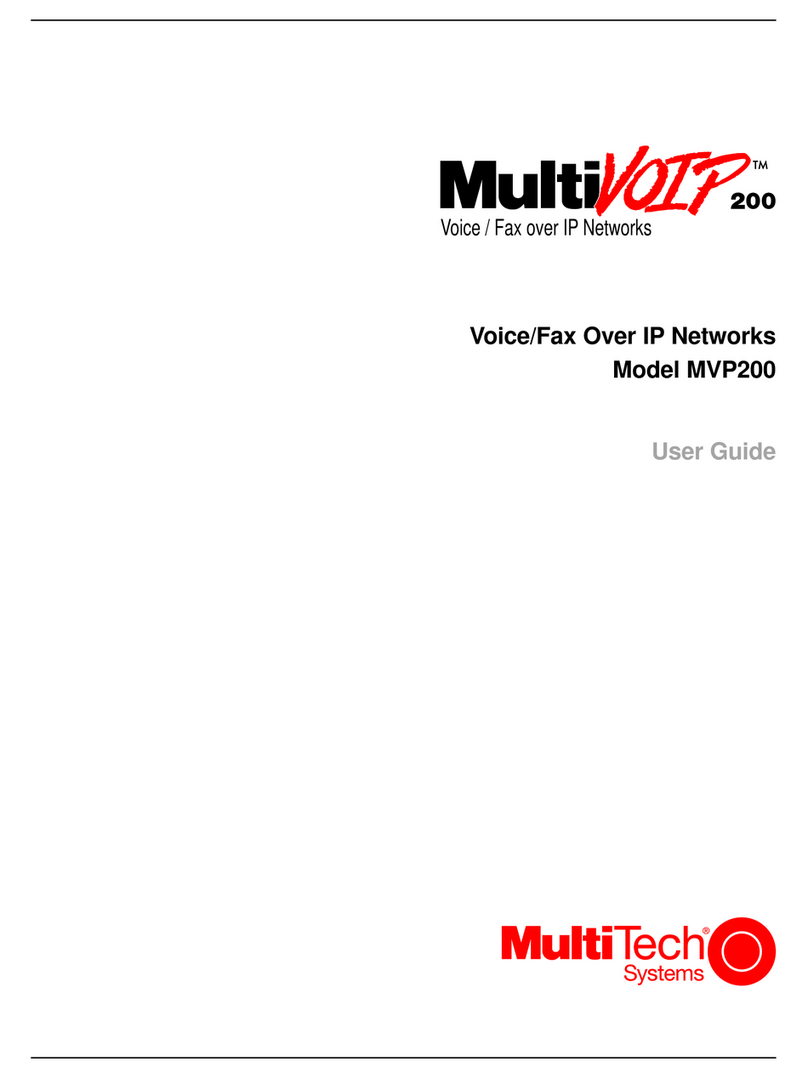
Multitech
Multitech MultiVOIP 200 MVP200 User manual

Multitech
Multitech Multi-Tech RouteFinder SOHO RF820 User manual
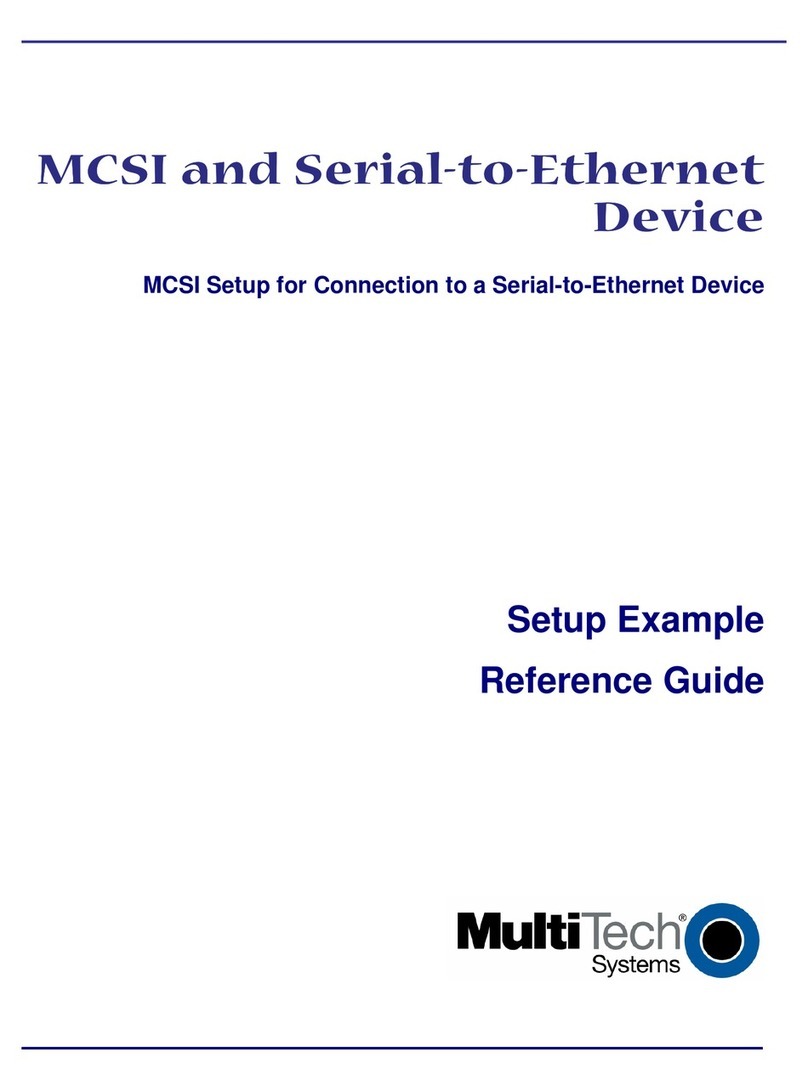
Multitech
Multitech MultiConnect SE MTS2EA User manual
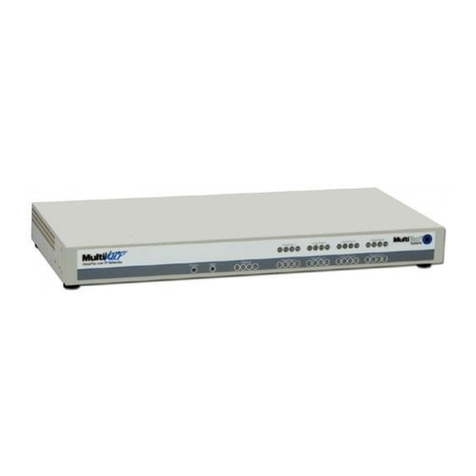
Multitech
Multitech MULTIVOIP MVP-810 User manual
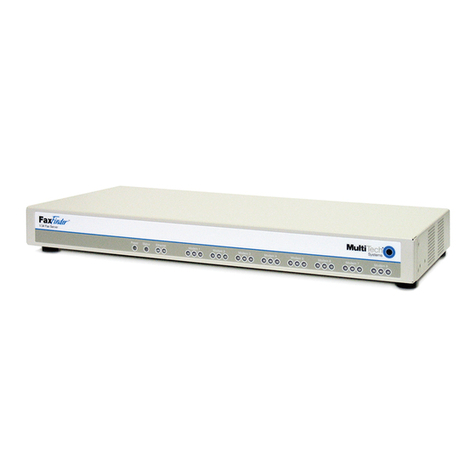
Multitech
Multitech FaxFinder FF-120 User manual
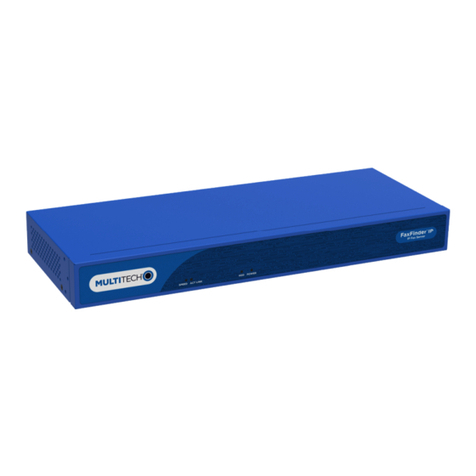
Multitech
Multitech FaxFinder FF240 User manual
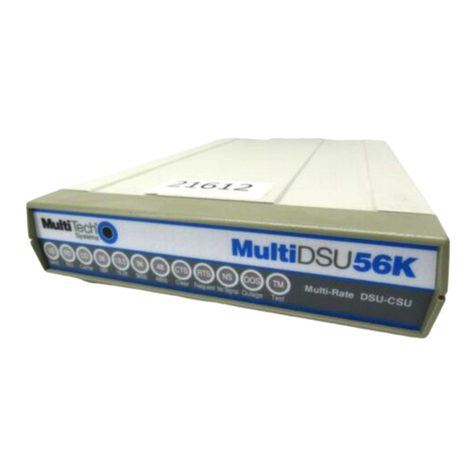
Multitech
Multitech MT56DSU2 User manual
Multitech
Multitech MultiConnect WF MTS2WFA-R User manual
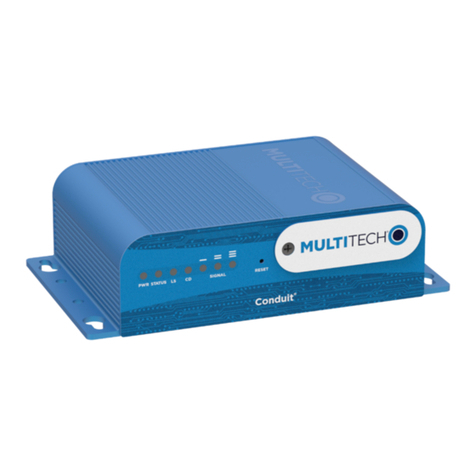
Multitech
Multitech Conduit MTCDT Series Installation instructions
Multitech
Multitech MultiConnect MTC-L4G2D User manual
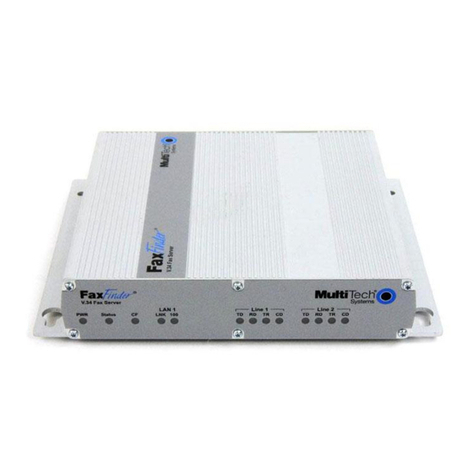
Multitech
Multitech FaxFinder FF-120 User manual

Multitech
Multitech MTE-LEU6-B07 User manual
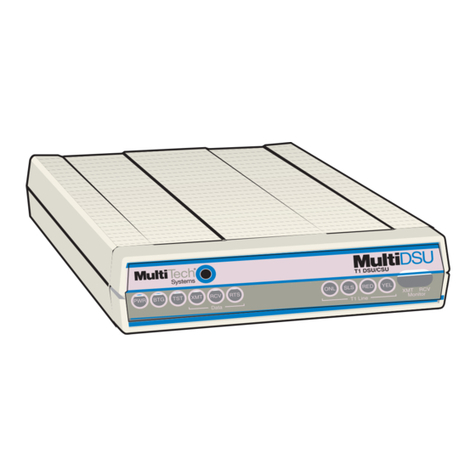
Multitech
Multitech MultiDSU MTT1DSU User manual
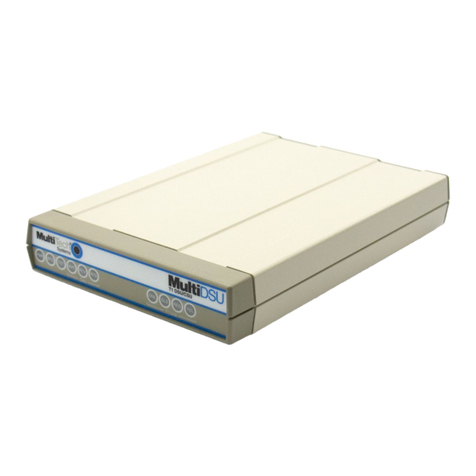
Multitech
Multitech MultiDSU MTT1DSU Operator's manual
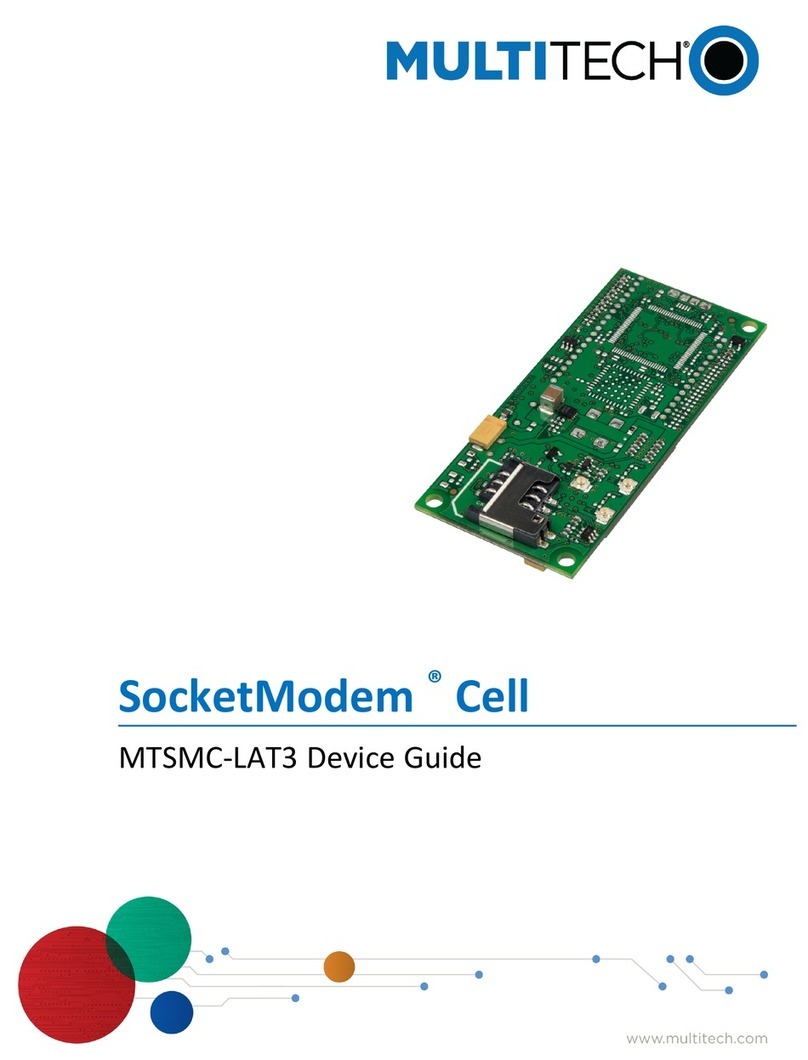
Multitech
Multitech MTSMC-LAT3 Application guide
Popular Network Hardware manuals by other brands

Cisco
Cisco CGR 1000 Series Getting connected guide

Matrix Switch Corporation
Matrix Switch Corporation MSC-HD161DEL product manual

National Instruments
National Instruments NI 653x user manual

B&B Electronics
B&B Electronics ZXT9-IO-222R2 product manual

Yudor
Yudor YDS-16 user manual

D-Link
D-Link ShareCenter DNS-320L datasheet
